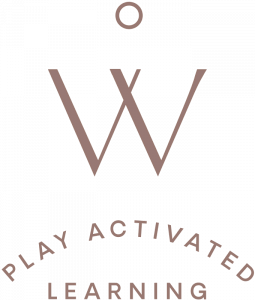Recently, I have been thinking about how teachers (including myself) sometimes refer to children’s work or play spaces as “a mess.”
When I encounter this type of children’s play, I have learned to take a step back, observe and reflect. I remind myself that what may look like a mess to me can be the thoughtful and intentional work of young children. I don’t remember where I learned this term, but I often refer to this type of work as “learning piles.” It is a type of schema; a way that children get to know and explore the materials.
Learning about Schema Theory in 2014 completely transformed my teaching practice.
Psychologist Jean Piaget described a schema as a thread of thought that is demonstrated by repeated actions and patterns—it appears in children’s play and art. These repeated actions suggest that children’s play is a reflection of deep, internal, and specifically directed thoughts.
When children explore schemas, they build their understanding of abstract ideas, patterns, and concepts.
Using this lens in my work with children, I am better able to understand why they are drawn to gathering, transporting, dumping and piling materials. It is not easy to step back and watch this work unfold. Practicing to be a reflective practitioner for many years now, it is my goal to make time to pause and marvel at how amazing children are.
As I observe and listen, I am intrigued by how children are naturally curious and use materials in such unique ways. If we watch and listen long enough, we can see the ideas unfolding. We can see the thought and intention. We can see how children are learning and making connections as they explore the materials in ways that we never imagined.
One of my favorite observations of a learning pile happened last summer. The 5 year-old children in my classroom were experimenting with the trajectory schema (Toys flying across the classroom was not my favorite schema, but I have learned to love it!) We set up a rubber ramp and the children used different materials to see which rolled down the ramp the fastest.
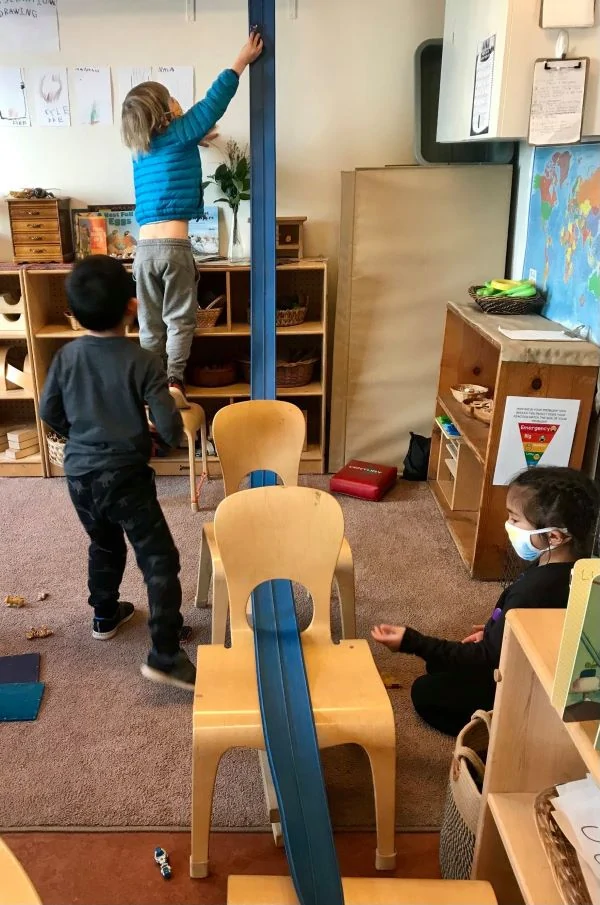
After using cars, balls, rocks and gems, they learned through trial and error that the cars rolled down the fastest.
Next, they had a conversation about how to make the cars stop at the end of the road. What materials could they use that would be strong enough to stop the cars? Their first idea was to dump the entire basket of pom poms.
No luck, the cars went right through them. The children loved seeing the pom poms go flying into the air. They picked all the pom poms and put them back onto the end of the track, this time adding plastic hair rollers. No luck again, the car zoomed right through them, the children again shrieking joyfully.
They returned all the materials back onto the ramp and dumped the entire basket of wooden letters on top. One of the children shouted out, “It’s meatloaf mountain!” The children cheered as they got the car ready to go down the ramp. “3, 2, 1, blast off!” The car zoomed down and was stopped by the mighty meatloaf mountain!
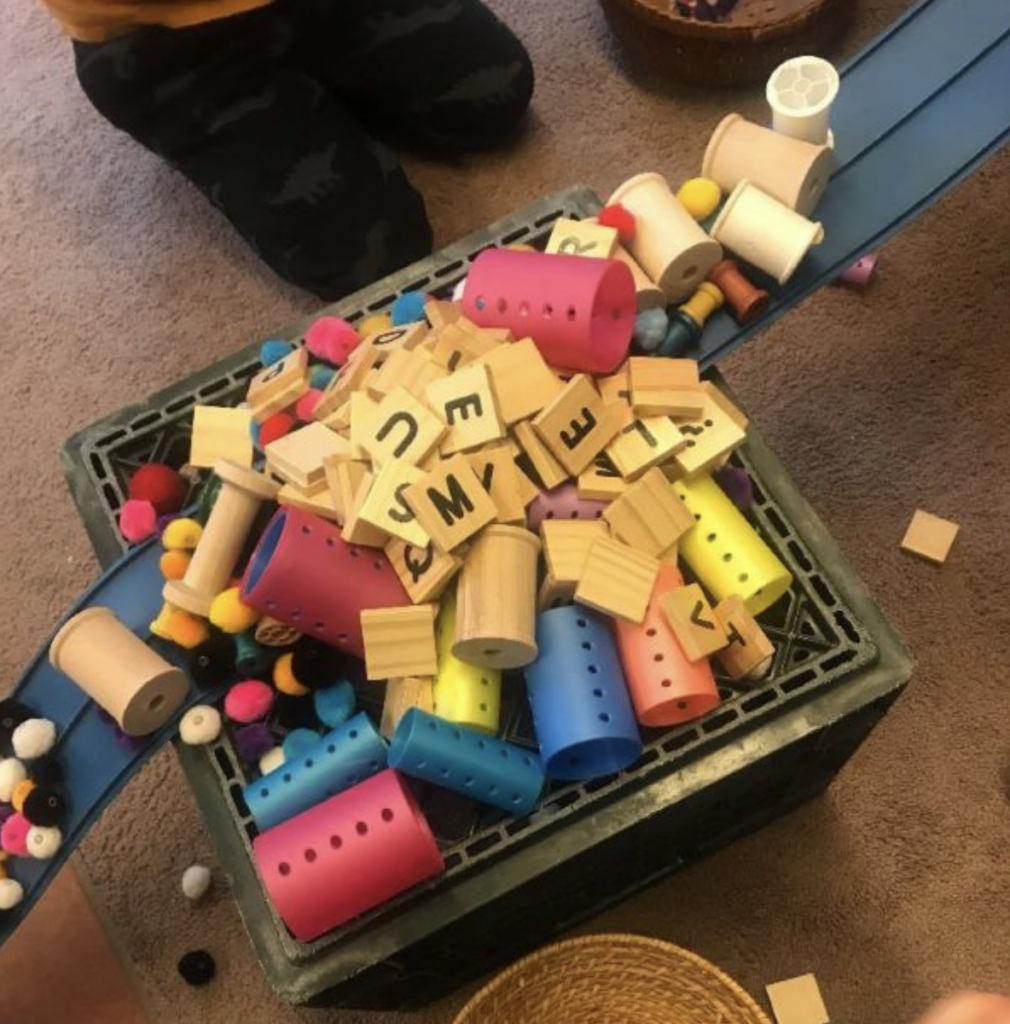
If I didn’t know about schemas and had not taken the time to watch and listen to what the children were creating together, I could have easily stopped them from “making a mess.” I am personally drawn to children’s play that is neat and aesthetically pleasing. I enjoy watching children use loose parts to create patterns and designs. I have learned to also see the value and beauty in these learning piles. It took many years of practice and reflection to change the way I see children’s work when they are dumping and creating these piles. I am now excited when I see these learning piles in classrooms. I invite the teachers to join me in closely examining and reflecting on the children’s play. We study the learning, creativity and theories behind the children’s work. We make plans about how we can further support this type of play. We celebrate the brilliance we see in the children!
Step back, Pause and Marvel:
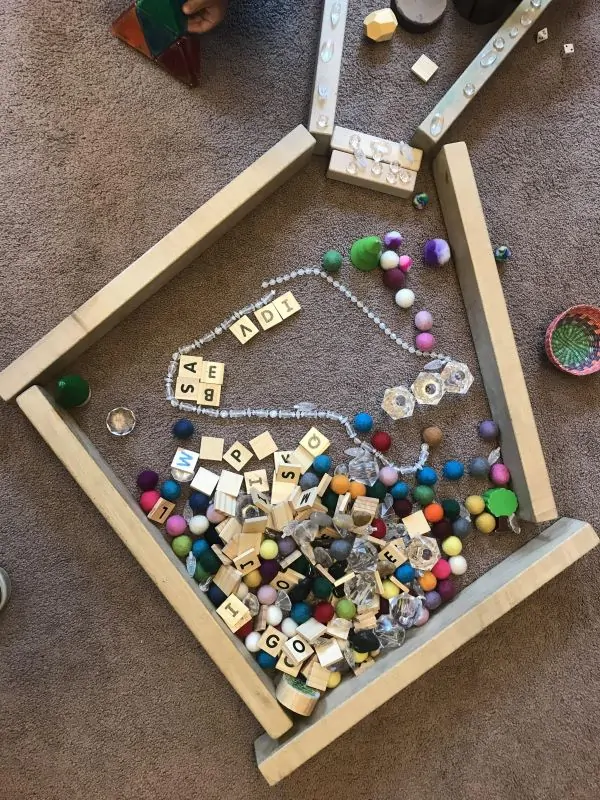
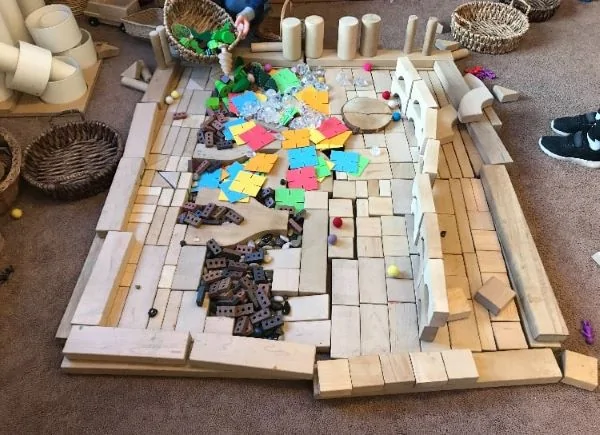
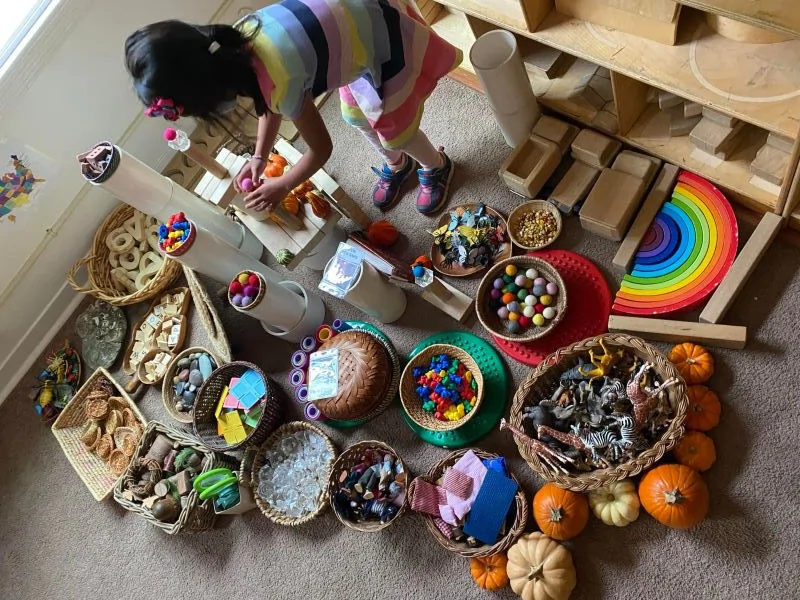
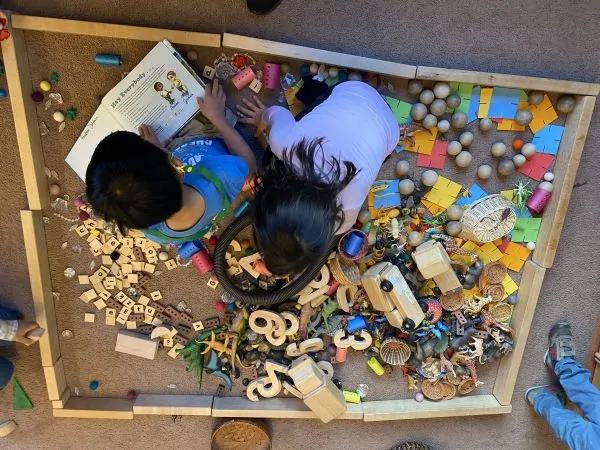
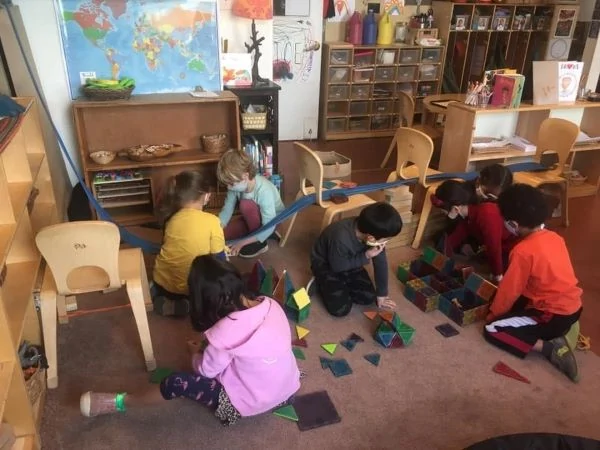
As you study the details in these photos of learning piles, what is your initial reaction? What do you guess the children had on their minds? What is similar or different about each work? Is there one that you like better than the other? Why? What schema explorations do you think this work represents? What types of learning piles do you see in your spaces?
Do you make the time to step back, pause and marvel?
References
Bruner, J. S. (1966). Toward a theory of instruction. Cambridge, Mass.: Belknap Press.
Dasen, P. (1994). Culture and cognitive development from a Piagetian perspective. In W .J. Lonner & R.S. Malpass (Eds.), Psychology and culture (pp. 145–149). Boston, MA: Allyn and Bacon.
Louis, Stella; Beswick, Clare; Featherstone, Sally (2018). Understanding Schemas in Young Children: Again! Again! Featherstone.
Piaget, J. (1936). Origins of intelligence in the child. London: Routledge & Kegan Paul.

